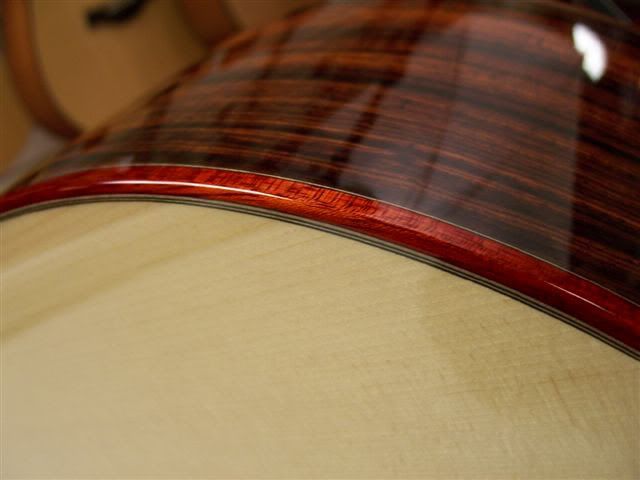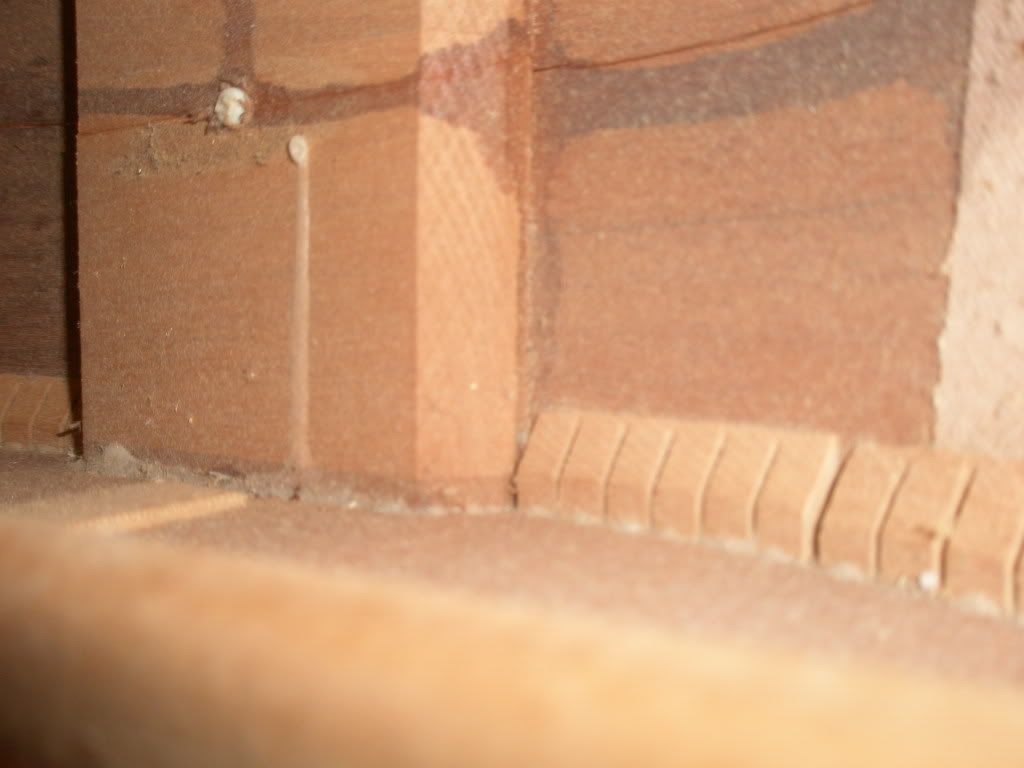
 |
|
#1
|
|||
|
|||
|
Hi,
Just want to learn about the different parts luthiers use to build a guitar from scratch, like I always hear kerfling, purfling, binding, braces, tone bars, etc... Can someone point me to a comprehensive link for a good idea what these parts are? Thanks Brian
__________________
Brian J&D ARB (2003) - Sold Cort MR730fx (2004) - Sold Cort SFX - Custom Shop (2005) - Sold Taylor 514ce (2006) - Sold Timothy S7 (2007) - Sold Yamaha LL16 (2008) - Sold Mcpherson 3.5 (2008) Blueridge BR183 (2009) - Sold Custom Acoustic FG2009CEQ (2010) - Sold Taylor 814ce (2011) - Sold Larrivee LV09, C10 (2012) Alvarez AG75CE (2013) - Sold Taylor GS Mini (2016) |
|
#2
|
|||
|
|||
|
Get a book on guitar building, would be my suggestion.
Jim McCarthy |
|
#3
|
||||
|
||||
|
Alex Willis's book was a entertaining read to get me a good idea of what I was getting myself into. It was missing some necessary details to actually build but a great outline and descriptions of the major steps to building.
http://www.amazon.com/Step-Step-Guit.../dp/156523331X |
|
#4
|
|||
|
|||
|
I usually recommend these:
http://www.amazon.com/Guitarmaking-T...4&sr=8-1-fkmr0 -gotta have this one. even ervin has one http://esomogyi.com/books.html -any of these books will take you to the next level if you are serious. "THE RESPONSIVE GUITAR" and "MAKING THE RESPONSIVE GUITAR" esp. http://www.amazon.com/GUITAR-REPAIR-...9&sr=8-1-fkmr1 -done in the martin factory in the 70's. IMO another must have. |
|
#5
|
||||
|
||||
|
Quote:
|
|
#6
|
|||
|
|||
|
Quote:
The "kerfing" is a lining used to strengthen (or make) the joint between the sides and the top, and the sides and the back.  It's called 'kerfing', because the word kerfing refers to the lines sawed in the wood to make it "bendable" without heat and moisture. Some guitars also have a non-kerfed, or solid, lining. The Purfling is a decorative detail that is placed between the binding and the guitar's top, back or sides. Here is a herringbone purfling.... The binding is the "edging" around the body of the guitar, front and back. It's purpose is primarily to seal the end-grain of the wood of the top and back. Secondarily, it is also a decorative feature. Check out the nice, red, bloodwood binding in this photo....  The 'braces' are all the internal pieces of wood that support the structure of the body. The back braces are usually 'ladder' braces, so called because they look somewhat like the rungs of a ladder....  The top contains several different types of braces. On a typical steel-string guitar, using the Martin X-bracing style pattern, you'll find the large "X-braces" which provide the bulk of the support for the top. The braces going off towards the sides are "finger braces". The two braces in the lower bout are "tone-bars". The tone bars help transmit vibrations from the bridge area to the lower bout. In this photo, there is only one finger brace on each side. Most builders typically use two on each side....  That's all you specifically asked for, but how about a few more, just in case someone else wants to know..... The rosette, is the decorative piece that goes around the soundhole...  The "bridge plate" is a piece of wood glued to the underside of the top which helps reinforce the top where the bridge is located and where holes are drilled for the pins.  The neck block is a piece of wood that is glued on the inside of the guitar body at the top. It acts as a joint for the top, the back, the sides and the neck. The tail block strengthens the bottom of the body of the guitar and gives the builder a place to glue the sides, the top and the back to on the bottom.  Many acoustic guitars have a "tail wedge" or an "end wedge". While not necessary for the structure of the instrument, it does add a nice decorative touch to the bottom of the sides, in place of simply butting the two sides together and leaving it at that.  Hope this helps....
__________________
1956 Guild F-20 1979 Martin D-18 12-string 1983 Ovation Custom Legend 1986 Squire Fat Strat (Korean) 2004 Gibson Les Paul Classic 2007 Fender Standard Stratocaster (Mexican Strat) 2010 Guild F-47rc (Purchased in 2012) 2013 Home-made Stratocasters (x2) 2017 Martin GPCRSG |
|
#7
|
|||
|
|||
|
Good post MJudd.
Stewmac.com is a good place to wander round and brows to see whats what. Cumpiano's Tradition and technology is very good
__________________
Quote:
|
|
#8
|
|||
|
|||
|
This is indeed very helpful. Thanks. If someone can arrange pictures like these here on this thread to show the whole building process will be great...
Quote:
__________________
Brian J&D ARB (2003) - Sold Cort MR730fx (2004) - Sold Cort SFX - Custom Shop (2005) - Sold Taylor 514ce (2006) - Sold Timothy S7 (2007) - Sold Yamaha LL16 (2008) - Sold Mcpherson 3.5 (2008) Blueridge BR183 (2009) - Sold Custom Acoustic FG2009CEQ (2010) - Sold Taylor 814ce (2011) - Sold Larrivee LV09, C10 (2012) Alvarez AG75CE (2013) - Sold Taylor GS Mini (2016) |
|
#9
|
|||
|
|||
|
Brian, there are a number of builders who blog about their building process. Do a google search and you can find what you are looking for.
Here's one... Building an Acoustic Guitar in your Kitchen John at Blues Creek has one here, along with some videos. One of my favorites is Stephen Godbe's blog. I think you'll find these quite helpful. They will take you through the whole building process, which would require more room that we can fit easily in a single post on this forum. If you really want to know more detail about the building process, you'll really need a book. (Especially, if you are thinking of building one, yourself.) I'd recommend either the Cumpiano book or Kindade's book. Amazon has both.
__________________
1956 Guild F-20 1979 Martin D-18 12-string 1983 Ovation Custom Legend 1986 Squire Fat Strat (Korean) 2004 Gibson Les Paul Classic 2007 Fender Standard Stratocaster (Mexican Strat) 2010 Guild F-47rc (Purchased in 2012) 2013 Home-made Stratocasters (x2) 2017 Martin GPCRSG Last edited by mjudd; 10-26-2010 at 02:05 PM. |
|
#10
|
||||
|
||||
|
Here is my first build with lots of U turns and pictures!
http://www.acousticguitarforum.com/f...php?t=15794545 Poke around here and Custom there are a couple of builds journalized by a variety of experiences. Also, do use the search engine; McKnight builds are thoroughly journalized by Mary McKnight for each of their clients. A few of those builds can be found. |